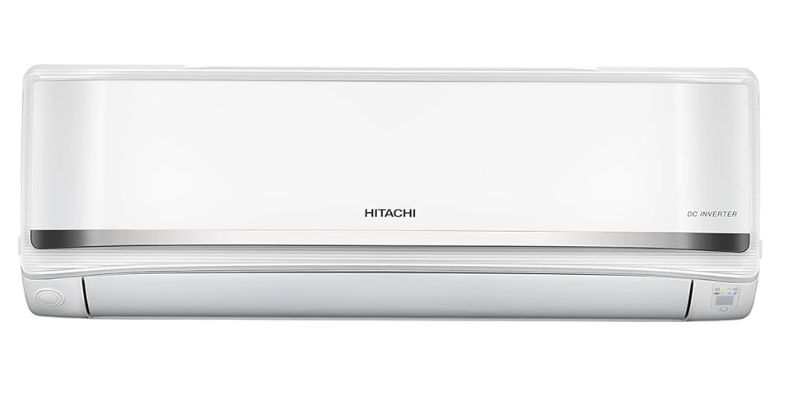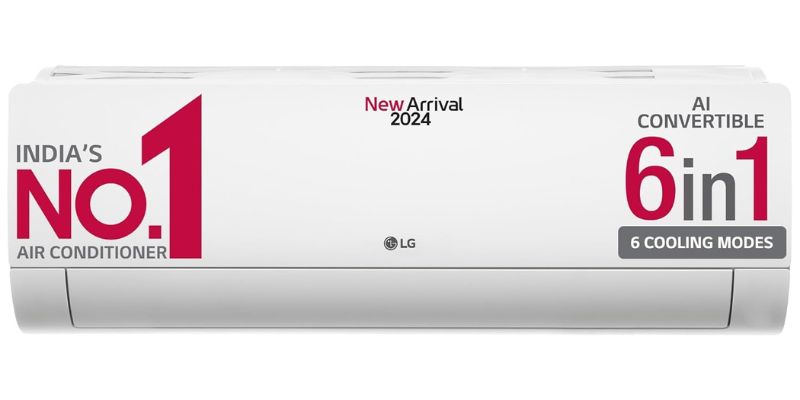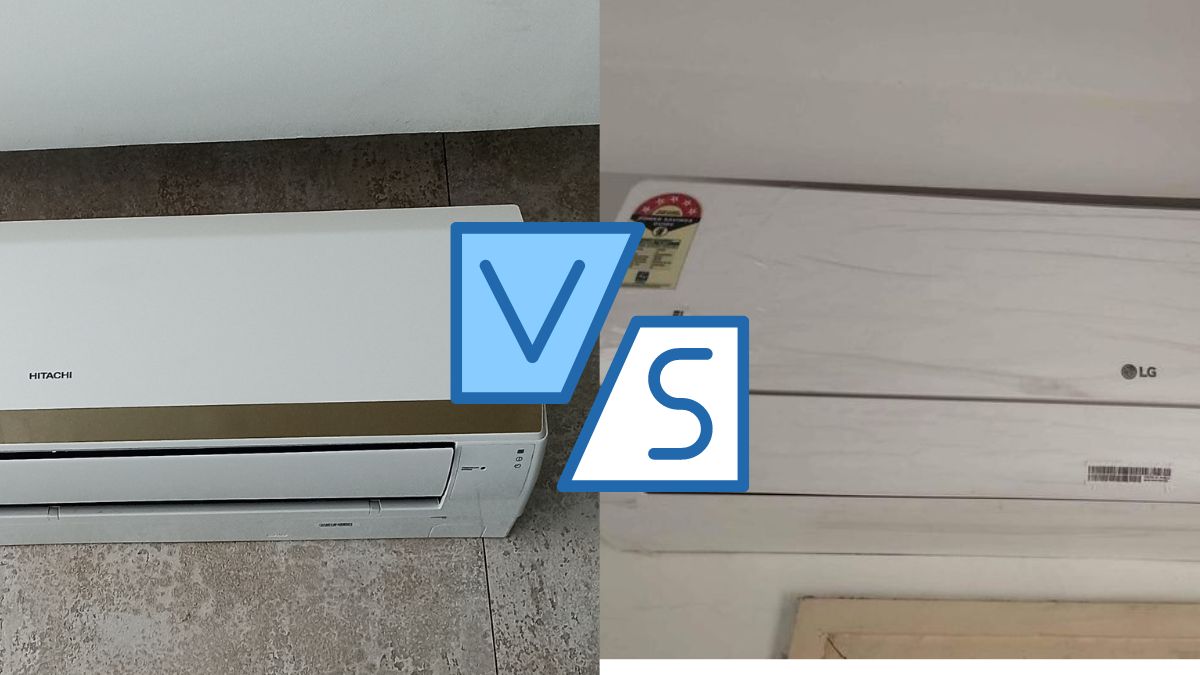
A bone-chilling 68% of households in India now own an air conditioner, up from just 3% in 1995. This meteoric rise underscores Indians’ desperate need for respite from scorching summers. But with myriad AC brands and models flooding the market, identifying the best match for your home can prove challenging. To help simplify the decision, I compare two top contenders – the Hitachi 1.5 Ton 5 Star vs LG 1.5 Ton 5 Star Dual Inverter AC across vital parameters. Read on to discover which reigns supreme.
In the 1.5 ton 5 star segment, Hitachi has 2 models: the 2023 model Yoshi 5400FXL, R32-RAS.G518PCAISF and the 2021 model RSRG518HEEA. LG has 3 models: the 2024 model TS-Q19PWZE, the 2024 model TS-Q19YNZE, the 2023 model RS-Q19UWZE, and the 2023 model RS-Q19ENZE. I chose to compare Hitachi’s 2023 model, Yoshi 5400FXL, R32-RAS.G518PCAISF, and LG’s 2024 model, TS-Q19PWZE, because both of these models are the latest and have 3.9 star above ratings and more than 800+ customer feedback.
Here is a comparison table of the key features of the Hitachi Vs LG AC 1.5 Ton 5 Star:
Fast cooling
Powerful performance even 52 degree Celcius
Low noise operation
Features like auto restart, sleep mode, etc.
No Low Gas detection
Quiet operation
Good cooling
AI auto cooling mode
Convertible cooling options
Low gas detection
Air Purifier
Wi-Fi connectivity
In case you are in a hurry, here is quick comparison, the main difference between the LG and Godrej split ACs lies in their ISEER rating and annual energy consumption . The LG AC has an ISEER rating of 5.2 while the Hitachi AC has an ISEER of 5.02. Additionally, the annual energy consumption of the LG AC is lower at 745 units per year versus 813 units per year for the Hitachi model. This indicates nearly 10% higher energy savings with the LG air conditioner over the course of a year. In terms of technology, the LG utilizes a dual inverter compressor compared to Hitachi’s single inverter compressor, allowing for more precise temperature control and operation. Both air conditioners have the same 1.5 ton capacity suitable for 150-180 square feet rooms and include copper condenser coils.
List of the differences between the Hitachi and LG Models
I found that the LG AC edged over Hitachi in certain aspects like energy efficiency, noise levels, smart connectivity and specialized cooling modes. However, Hitachi also offers some unique technologies like their wide temperature Xpandable+ technology.
01. Cooling Abilities
To effectively cater to the hot Indian summers, strong cooling abilities and climate control technologies become paramount in choosing an AC.
I compared the tonnage, room size compatibility, cooling capacity etc to determine how well these 1.5 Ton ACs can handle spaces around 150-180 sq ft in size:
| Factor | Hitachi | LG |
| Tonnage | 1.5 Ton | 1.5 Ton |
| Suitable Room Size | 150-180 sq ft | 151-180 sq ft |
| Cooling Capacity | Xpandable+ adjusts capacity in extreme heat | 6-in-1 mode alters cooling as needed |
| Dehumidification | Good dry mode | Advanced Monsoon Comfort mode |
The LG AC offers an edge for Indian conditions with its specialized Monsoon Comfort mode that maintains ideal humidity levels to provide comfort during humid monsoons.
Both utilize sufficient tonnage and air circulation power to effectively cool down a 150-180 sq ft room. However, LG provides more customized control over the cooling functionality through its innovative 6-in-1 mode that adapts based on ambient conditions and usage patterns.
02. Noise Level Comparison
Noise generation is another important consideration for ACs as no one likes disruptive ambient sounds. I compared the decibel levels and speed controls in both models:
| Factor | Hitachi | LG |
| Noise Level | Higher at 39 dB | Lower at 31 dB |
| Fan/Cooling Speeds | 5 Steps | 6 Steps for more control |
Clearly, the LG AC has significantly lower noise which makes it more unobtrusive. The 6 step cooling speeds settings also allows better customization of noise vs cooling tradeoff as per user needs.
The Hitachi model unfortunately has louder operation which might cause some hindrance if used in bedrooms or home theaters.
03. Energy Efficiency and Consumption Comparison
Energy efficiency directly impacts electricity bills. So I checked the star ratings, power usage numbers on both:
| Parameter | Hitachi | LG |
| Star Rating | 5 Star | 5 Star |
| Annual Energy Consumption | 813 Units | 744 Units |
| ISEER | 5.02 | Higher at 5.2 |
| Stabilizer-Free Operation | No | Yes |
| Annual Energy Use | 813 units | 745 units |
| Electricity Rate | ₹10 per unit | ₹10 per unit |
| Yearly Cost | ₹8,130 | ₹7,450 |
While both meet the 5 star benchmarks, the LG AC consumes 69 units lesser annually contributing to savings. It also boasts a higher ISEER rating of 5.2 beating Hitachi’s 5.02 figure.
The stabilizer-free operation of the LG AC also reduces wastage by correcting voltage fluctuations internally. This increases its overall energy efficiency.
04. Smart Feature Comparison
Modern connectivity technologies in ACs unlocks intelligent controls and automation. I analyzed these smart features in both:
| Feature | Hitachi | LG |
| App Connectivity | No app control | ThinQ app allows monitoring AC remotely |
| Voice Control | No | Compatible with Alexa & Google Assistant |
| Diagnostics | Hexa Sensor for self-check | Smart Diagnosis for easy maintenance |
| AI-Based Climate Control | ✖ | ✔ (AI+ Convertible 6-in-1 Cooling) |
| Display | Standard LED | Premium Magic Display |
The LG AC clearly comes out ahead in terms of smartness with app and voice control functionalities. Its ThinQ app offers effortless management by letting users switch on/off, change modes, schedules etc from anywhere.
Voice command operation via Google Assistant and Amazon Alexa in LG AC makes the experience handsfree and futuristic. Hitachi does not provide these connectivity features currently.
05. Maintenance Comparison
Air conditioners require periodic maintenance for their upkeep. I evaluated the cleaning needs and maintenance costs involved with both brands:
| Factor | Hitachi | LG |
| Filter Cleaning Frequency | Clean filter alert for timely washing | Smart diagnosis reminds about filter cleaning automatically |
| Anti-Corrosion Protection | Average | Ocean Black Fin coating guards against rust and extends condenser lifespan |
| Service Network Reach | 1000+ wide service network | 1200+ experienced technicians across India |
The Ocean Black coating specifically in the LG AC prevents corrosion issues and wear/tear even in coastal areas with salt air. The diagnostic alarm also alerts users for any required maintenance.
Both brands offer expansive service network across India to facilitate repairs if ever needed. LG edges ahead with 1,200+ qualified and responsive service professionals spread nationally.
Which is better, Hitachi Vs LG AC 1.5 Ton 5 Star?
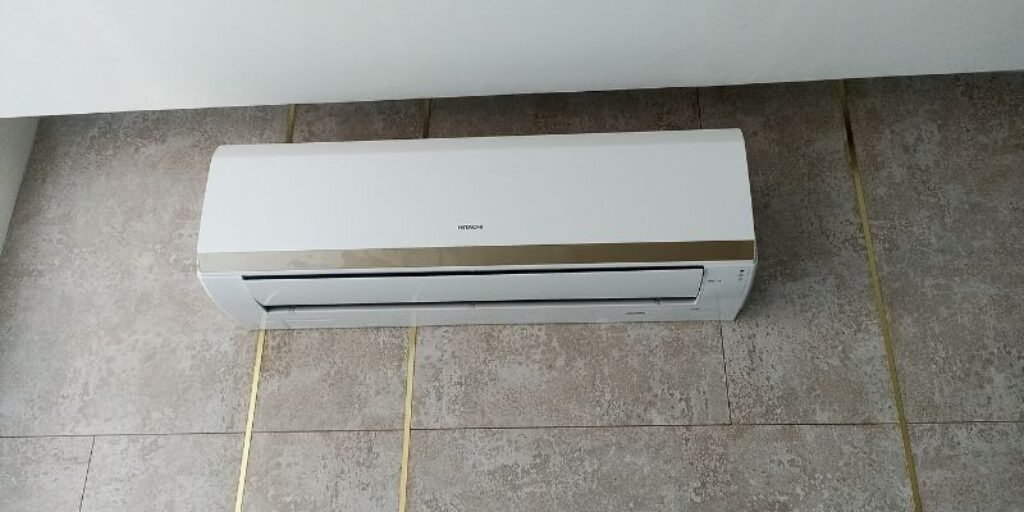
4 Reasons to consider buying a Hitachi AC
- Excellent legacy brand for cooling needs
- Very good ISEER rating (5.02)
- Capable wider temperature control
- Xpandable+ for faster cooling response
4 Reasons to consider buying a LG AC
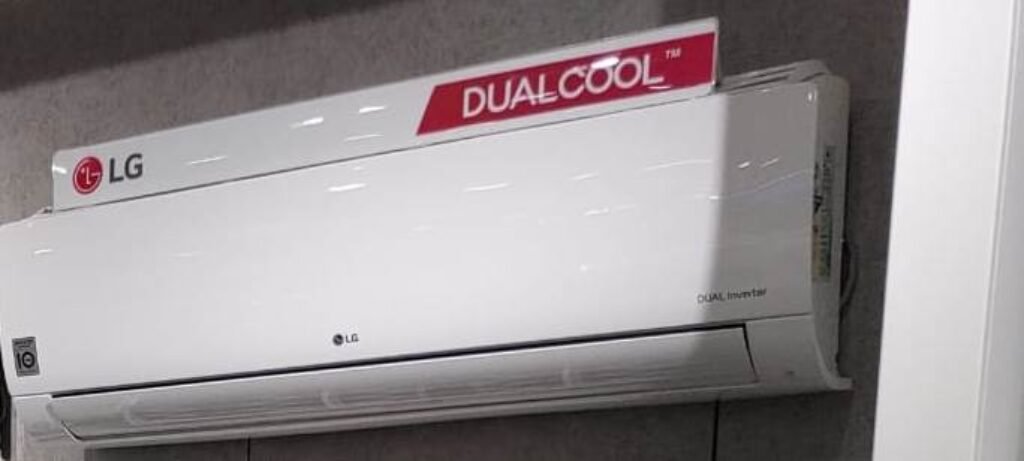
- Quietest performance (31 dB only)
- Maximum annually savings (₹680/year)
- Cutting-edge Wi-Fi and AI features
- Monsoon Comfort, Low Gas Detection capabilities
The Verdict: Choosing One Will Depend on Your Preference
This comparison reveals LG’s cutting-edge innovations make their 1.5 Ton 5 Star AC a smarter investment for future-ready homes. With Wi-Fi app controls, voice assistants, and intelligent cooling modes, LG leads the pack in energy-efficient comfort. However, for buyers prioritizing value, Hitachi’s reliable technology still delivers solid performance. The choice ultimately depends on your needs – advanced features or budget price. Whichever model you select, staying cool just got easier.

